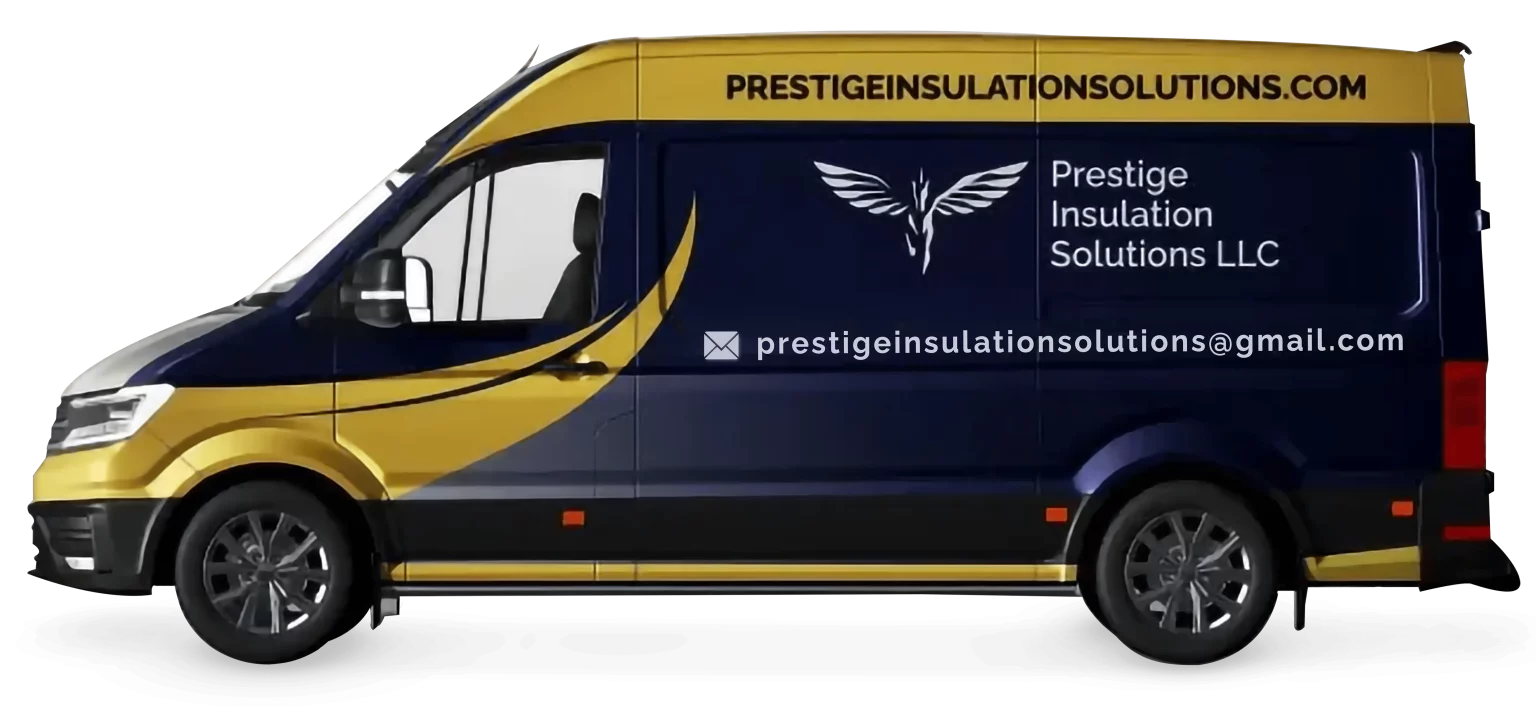We talk to homeowners every day who are trying to make responsible choices for their homes and their families. If you’re asking, What are the best eco-friendly insulation solutions for homes? , you’re likely looking for more than just energy savings. You’re looking for healthier air, fewer environmental impacts, and real long-term value. At prestige insulation solutions, this is where we focus our attention: guiding homeowners through choices that not only perform exceptionally well but are aligned with their values.
In this guide, we’ll walk you through which insulation materials meet these standards—and why. We’ll help you understand how each option affects energy efficiency, indoor air quality, and environmental footprint, and how we install them to make a real difference. Whether you’re renovating or building from scratch, here’s everything you need to know to make the best decision for your home.
Why Eco-Friendly Insulation Matters More Than Ever
We’ve seen the shift in what homeowners expect from their insulation. It’s no longer just about stopping drafts. The best insulation protects the home and the people inside it. It cuts energy costs, keeps rooms more comfortable, and reduces exposure to chemicals—all while lowering your environmental impact.
Our clients often ask us: Is it possible to insulate without using synthetic, high-emission materials? Can you really combine performance and sustainability? The answer is yes, and the results are better than ever.
Healthier Living Starts with Safer Materials
Traditional insulation products can release volatile organic compounds (VOCs) or harbor irritants like formaldehyde. We work with materials that are certified low-emission, safe to handle, and safe to live with. When insulation is done right, your air feels cleaner and you feel the difference.
Energy Efficiency Without Environmental Tradeoffs
We choose products that insulate effectively and reduce carbon footprints across their entire lifecycle. That means less heating and cooling use, less stress on the grid, and real savings for you. These materials don’t just seal your home they protect your future utility costs.
Cellulose Insulation: Recycled, Reliable, and Resilient
Cellulose insulation is made from recycled paper and treated to resist fire, mold, and pests. It’s one of the greenest options available and one of the most practical.
This isn’t just old newspapers stuffed into your walls. The cellulose we install is professionally applied through dense-pack or blown-in methods, filling every cavity and crack for maximum coverage. It performs especially well in older homes where gaps and irregular wall shapes are common.
Why Cellulose Works for Retrofit and New Construction
We’ve insulated countless attics and wall cavities with cellulose in homes across Florida. It’s a go-to for remodels, because it conforms to existing structures without major demolition. And for new construction, it offers reliable R-values and reduced air infiltration.
Affordable, Effective, and Low Impact
Cellulose is often more budget-friendly than other eco-friendly materials. It’s a favorite among homeowners looking for a greener product without the premium price. And because it’s locally sourced and made from recycled content, it keeps emissions low from production through installation.
Sheep’s Wool Insulation: Natural Performance, Long-Term Comfort
Sheep’s wool insulation may sound quaint but it outperforms many synthetic materials in both comfort and moisture regulation. It’s breathable, durable, and naturally resistant to fire and pests without chemical additives.
We recommend wool insulation to homeowners looking for the ultimate in natural comfort. It keeps homes warm in the winter, cool in the summer, and regulates humidity like no other material we’ve worked with.
Outstanding Moisture Control
Wool fibers absorb and release moisture without losing insulation value, which helps prevent mold and mildew inside walls. In humid climates like ours, that’s a major advantage. We’ve seen this make a measurable difference in indoor air quality over time.
A Renewable Choice That Lasts
Sheep’s wool is fully renewable and biodegradable. But don’t let that fool you into thinking it breaks down easily it’s remarkably long-lasting. With proper installation, it maintains its structure and effectiveness for decades.
Cotton (Denim) Insulation: Soft, Safe, and Sustainable
Cotton insulation, often made from recycled denim, brings together comfort, sustainability, and soundproofing in a single package. It’s non-toxic, easy to handle, and ideal for homeowners concerned about allergens or chemical sensitivities.
We install cotton insulation in areas where indoor air purity is a top priority like nurseries, bedrooms, and home offices. The material itself feels more like a blanket than construction material, and it’s safe enough to install without protective gear.
Ideal for Family Homes
Many of our clients with young children or respiratory sensitivities choose cotton insulation for the peace of mind it brings. It doesn’t irritate the skin or lungs, and it doesn’t contain formaldehyde or fiberglass.
Strong Acoustic and Thermal Performance
It doesn’t just feel better it performs well, too. Cotton insulation helps block sound and reduce temperature swings, especially in interior walls and between floors. That translates to a quieter, more consistent indoor environment.
Spray Foam (When It’s Bio-Based and Applied Right)
Not all spray foam is created equal. Some formulations release high levels of emissions during application and curing. But bio-based spray foams, which are made from renewable oils and applied by certified professionals like our team, offer a smart balance between performance and sustainability.
We use spray foam in projects where airtightness is critical such as vaulted ceilings, crawl spaces, and modern home envelopes that demand maximum efficiency.
Precision Installation for Maximum Benefit
Proper installation is everything. We apply spray foam with meticulous attention to expansion rate, curing time, and safety standards. This ensures your home gets full thermal and air-sealing benefits without lingering fumes or uneven coverage.
Long-Term Efficiency, Lower Bills
Once in place, bio-based spray foam delivers some of the highest insulation values per inch. It minimizes energy loss through air gaps and reduces HVAC load especially important in hot, humid climates like ours.
Your Path to a Healthier, More Efficient Home Starts Here
Making your home more sustainable doesn’t mean compromising on performance. With the right insulation, you get both real comfort and long-term savings, without the chemical burden. At prestige insulation solutions, we bring expert guidance, proven materials, and careful installation to every project.
Whether you’re upgrading an existing space or starting fresh, our team is here to help you choose and install the best eco-friendly insulation for your needs. No pressure. No gimmicks. Just practical solutions that work.
Want to talk it through?
Call us today at (850) 429-4969 or email us at [email protected] to schedule your consultation. Let’s make your home cleaner, safer, and more energy-efficient starting now.
Have More Questions? We’ve Got Answers
What is the most eco-friendly insulation material available today?
Cellulose and sheep’s wool top the list due to their natural sourcing, high performance, and minimal environmental impact. Cotton insulation is another strong contender for indoor air quality.
Is eco-friendly insulation as effective as traditional insulation?
Yes. In fact, many eco-friendly materials outperform traditional fiberglass or foam over time due to better air sealing, moisture resistance, and durability.
Will I save money by switching to eco-friendly insulation?
Absolutely. You may see slightly higher upfront costs, but the long-term savings on heating and cooling are significant. Plus, some options qualify for energy-efficiency rebates.
How long does eco-friendly insulation last?
Most sustainable insulation options have lifespans of 30–100 years depending on the material. Wool, cellulose, and properly applied spray foam are especially long-lasting.
Are there tax credits or incentives for eco-friendly insulation?
Yes. Many federal and local programs offer credits or rebates for energy-efficient upgrades. We stay current on available incentives and help clients take advantage of them.
Can I install eco-friendly insulation myself?
Some materials like cotton batts are DIY-friendly, but dense-pack cellulose and spray foam require professional equipment and expertise to ensure effectiveness and safety.
Is spray foam environmentally friendly?
Only when using certified low-emission, bio-based formulations. We exclusively install safe, third-party-tested spray foams with a lower global warming potential.
How does insulation impact indoor air quality?
High-quality insulation reduces air leaks that bring in pollutants, and materials like wool or cotton avoid off-gassing altogether. We help clients choose the safest options for their health.
What’s the best insulation for a humid climate?
Wool and cellulose perform very well in high-humidity environments. Wool’s moisture-buffering properties make it especially effective at preventing mold and mildew.
How can I tell if my current insulation is sustainable?
If your home uses fiberglass, polystyrene, or older spray foam, chances are it’s not the most sustainable option. We can perform an insulation audit to evaluate and upgrade your home’s performance.



